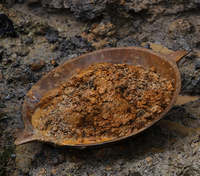This is the first of a two-part series examining diversification efforts by Latin American drug-trafficking networks. Part I examines the FARC's illegal gold-mining operations in Colombia. Part II will examine Mexican drug traffickers' use of oil-tapping to generate revenues.
For more than 40 years, the Revolutionary Armed Forces of Colombia, or FARC, has waged a bloody war against the Colombian government, financed largely through cocaine trafficking. Over the past decade, as the Colombian government marshaled U.S. military assistance to greater effect, the FARC has seen its guerilla ranks diminished by about half. Meanwhile, coca eradication programs in the Colombian countryside have dented the group's access to cocaine's chief ingredient. The FARC responded by resorting to kidnapping, holding some hostages for cash ransoms and others -- most notably French-Colombian politician Ingrid Betancourt -- as political bargaining chips. Here, too, as the trend grew clearer, the Colombian government mounted a concerted counterattack, carrying out raids on FARC camps to retrieve many hostages, including Betancourt in 2008.
To stanch its losses, the FARC has increasingly turned to Colombia's most venerated source of riches: gold. Today, with gold selling near record highs -- above $1,400 an ounce, with an increase of more than 30 percent in the past year alone -- Colombia is sitting pretty. Revenue from licensed mines has surpassed that of coffee exports, and while Colombia is still considered a mid-tier exporter of gold on the world market, many firms reckon it could greatly increase its exports. Multinational corporations from Canada, the United States, South Africa and elsewhere are tripping over each other in their efforts to move in. In January, China publicly offered to build a rail network dubbed a "dry canal" to allow Colombia to speed its natural resources -- especially coal, but also gold -- from the Atlantic port of Cartagena to the port of Buenaventura on the country's Pacific coast.

